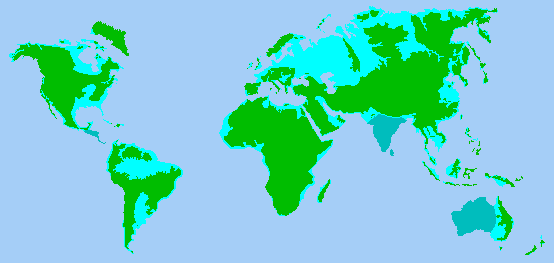
| |
 |

After the cataclysms the existing polar ice will melt, while at the same time reforming over the new poles. The melting will occur faster than the reforming, as for ice to form there are more factors at play than for ice to melt. We will explain. The ice over the former poles will now be facing the Sun, and the melt rate will proceed based on the air temperature and the absorption of solar rays, both of which will be high as the old poles will now be situated essentially at the new equator. Any water at the new poles will freeze, but the buildup of ice on a pole is not altogether from the water that happened to be there when the pole took position. The buildup comes from precipitation, and this accumulates over hundreds of years. At some point an equilibrium is established, with icebergs breaking off and floating to warmer waters and the like. The Earth, therefore, will experience More Water in its oceans for some time after the cataclysms.
Where new poles take centuries to fully form, existing poles thrust under an equatorial sun melt rapidly. The melting poles will thus raise the sea level, worldwide, by 650 to 700 feet within two years. Survivors living below this level will find themselves moving repeatedly as rivers begin to overflow their banks and marsh areas become lakes. Those planning survival sites should consider this as well as escape routes for survivors who might be trapped by the rising water. Survival sites should be selected for their ability to link to other land areas that will be above the water line as well, so that technologies and skills can be shared among the survivors. Survivors thus will find visiting each other possible rather than impossible in a new world without maps and certainly without guidelines for boats setting out on what will seem to be an endless sea.
Going on the assumption that the poles have always been, essentially, where they are found today, humans have extracted core samples which they assume will be a frozen record of climatic changes back through the eons - a dust layer here, bits of vegetation there, a higher carbon dioxide level here, and on through any number of variables. However, unlike the rings in a tree, which show its age, layers of ice do not show what is absent. The tree trunk is viewed as a whole, reflecting the life of a tree, but polar ice reflects only that portion of its life that has not melted away. Many shifts are slight, thus causing partial melting or melting on only one side. Thus, for the existing poles, there are places where the debris and gasses caught in the ice tell a long tale.